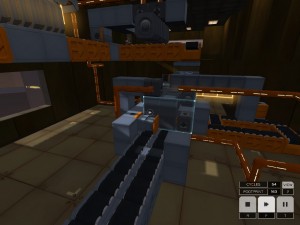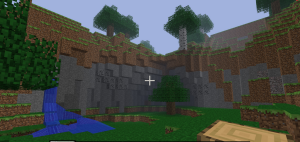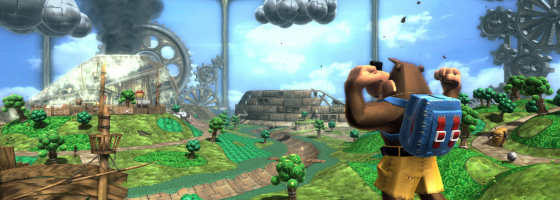Recently, I tried and ultimately found myself not enjoying the open-ended game Satellite Reign. One of the things that bothered me about the design and was a bullet point the developers were pushing, was saying that the mechanics would lead to “Emergent gameplay,” that would let the players shape the situations around them. Having given up playing the game, I did not find it to be emergent at all and I wanted to explore this concept further, because this is one of those dream game design concepts that designers can (and have) chase.
Emerging Elements:
Emergent Gameplay will be defined for this post as the following:
Emergent Gameplay: A title where the mechanics afford the player to create new strategies and utility beyond their original intent or utilization
Emergent gameplay as mentioned at the start is one of those dream concepts that developers love to explore; just like a game with endless replayability. Despite that definition, Emergent gameplay is hard to properly define, because of how tied it is to open-world or open-ended gameplay.
The point is that the mechanics are flexible enough that they can be combined by the player to produce unintended actions that the developer may or may not not have specifically designed the game around. The result is that the player can solve challenges or create things with a completely unique solution and the game mechanics have a wide enough berth for this to work.
But here’s the problem: Emergent gameplay is built around open-ended games, but not every open-ended game is an example of Emergent gameplay.
Structured Sandboxes:
For a game to have Emergent gameplay, the design has to be open-ended to give the player enough options to be creative with. However, just giving the player a lot of options doesn’t make your gameplay emergent; there are two conditions that have to be met.
First, the mechanics and tools must be malleable to the point where someone can combine them in expected and unexpected ways. If you give the player 100 different options for solving a solution, but they have no connectivity between each other, then you’ve created 100 locked paths and not Emergent gameplay.

Satellite Reign may be open-ended, but features linear tools and objectives which doesn’t make it all that emergent
Second, the game’s objectives (if any) must make allowances for and possibly reward the player for using Emergent gameplay strategies. Letting the player do what they want won’t matter if the game only has one or two ways of beating it.
This point also busts the concept that letting the player choose between stealth and violence is an example of Emergent gameplay. The reason is that the player’s actions are still locked to two choices; two very different and wildly varied choices, but still choices set up by the designer.
And that takes us back to Satellite Reign and what my problem is with calling the gameplay emergent. The game gives you a wide variety of equipment to use and equip your agents with, but none of that translates into how you would accomplish an objective differently. The missions on the open world map are all about getting to a specific point or getting someone into a building to steal something. Because you are on a set map, that limits just how much you can manipulate things via the tools and mechanics available. There’s no room for player defined uses, as everything has been defined by the developer.
I have a quick example of what is and what isn’t Emergent gameplay. Let’s take two games that allow the player to specialize in super strength. In game A, super strength simply acts as a key; allowing the player to break down select walls defined by the designer.
In game B, super strength is a modifier to the player’s attacks and grab and throw mechanic. Here, the player could pick up a container that has several teammates inside of it, throw it over defenses or enemies and create a very offensive variation on the Trojan horse strategy.
In game A, the use of super strength was predefined and had set options by the designer. Whereas game B gave the player a basic tool and then let them figure out ways to take that further.
Emergent gameplay isn’t about complex mechanics, but simple forms of interaction that add up to big things; as evident by these next examples.
The Gears are turning:
My two examples of Emergent gameplay both have to do with construction. The first one is Infinifactory by Zachtronics. Infinifactory is all about creating complex assembly lines from individual tools and components that can be combined in different ways. Every puzzle in the game has two set features: The inputs and where they’re located, and the output required and location. Everything in between is completely up to the player to figure out.
Each individual tool is not complicated in its utility, but can be combined with other elements to produce new functionality. For example, attaching welders to something that moves, allows you to create a specialized welding tool that can move in and out of your assembly line.

Infinifactory gives the player all the tools they will need and asks them to come up with creative solutions to the game’s puzzles
My other example is a favorite game of mine: Banjo and Kazooie Nuts and Bolts. The game was completely different to the 3D platforming of its predecessors. Here, you construct a variety of land, air and sea vehicles out of component blocks and equipment.
Everything has a different weight to it which affects durability and speed. The challenges of the game were linear, but you were free to design vehicles to your specifications to figure them out.
The best example of this emergent gameplay would be a later level in the game. The challenge was to create a land vehicle that would have to get over giant roadblocks to get around the track. You could design a vehicle with springs to make it jump… or you could get creative.
One of the game’s advanced blocks are separators, that allow you to take a vehicle and have parts come off that you don’t need any more. So my solution to the as mentioned challenge was, I made a land vehicle that also had wings and propellers with the wheels and car parts attached via separators; the second the race started, my “car” separated and turned into a plane that just flew over the competition.
In both these games, there are a lot of mechanics and tools with simplified uses to them, but those uses combined with the open-ended nature of the design gave players a lot of leeway in how they handled the game. Another good example of Emergent gameplay that I have not spent as much time with as I should, is Kerbal Space Program; a game that lets you create your own spaceships to fly(or crash in my case.)
As you can see, Emergent gameplay requires both an open ended structure and simplified mechanics or tools to work properly, and I would be remiss not to mention the current poster child for how far you can go.
Mined:
Minecraft is currently the king of the hill for Emergent gameplay and a game I’m sure you’ve no doubt heard of by now. The game’s straightforward and easy to understand gameplay, offered a lot of flexibility and interconnected mechanics and tools for the player to experiment with.
The game is one of the best examples of the allure of sandbox styled game design; allowing players to do whatever they wanted within the context of the game. The Emergent gameplay worked with the sheer volume of tools and things the player could build. Many objects by themselves had a simple purpose, but they could be combined to create elaborate combinations for the player to figure out.

Minecraft is the perfect example of the allure of Emergent gameplay; letting the player do what they want with all the tools and systems provided
Minecraft’s easy to use UI and control scheme allowed the designers to focus the creativity and depth on the various tools and components; meaning that it didn’t take a long time to understand how to play Minecraft, but there was a lot to uncover.
In fact, this kind of approach to design has become a popular aspect of the survival genre craze we are seeing today, with games like Rust and DayZ for example.
Again, the basic gameplay and controls are not complicated, but the world itself has a lot of options for the player to figure out and use in their own way. The freedom to do what you want within the game space is a strong pull for gamers looking to play something where they’re not completely hindered by the mechanics.
Worlds within Worlds:
Emergent gameplay when pulled off correctly can elevate a game to crazy heights, and has become the goal of many sandbox or open-ended games. However as we’ve talked about, it’s a lot harder than just giving the player a lot of choices; the game must be open enough to have a variety of solutions and the tools must allow for interconnection and adaptability.
And while it may only be a dream for a lot of game designers, as evident with games like Minecraft and the survival genre, it’s certainly a goal worth chasing after.



Pingback: 9/15/15 – Imagination, Emergence, Sectioning, Memorability, and Swords! | Game Design Digest()